By Pallavi Sirjoosingh
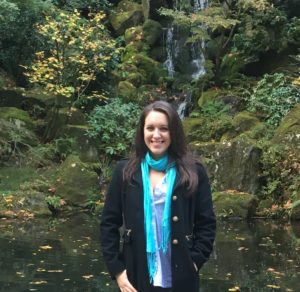 Dr. Rebecca (Becky) Toroney took to biochemistry during her undergraduate years at Franklin & Marshall College. While working under Prof. Ryan Mehl, she helped develop a novel method to increase protein stability using UV cross-linking by incorporation of photoreactive unnatural amino acids. Following undergraduate studies, she decided to pursue a Ph.D. in chemistry. In addition to her interest in all things scientific, Becky was encouraged to pursue graduate studies by a mentor at home. Her sister, Rachel, who at that time was attending graduate school at Johns Hopkins University, gave Becky the behind-the-scenes on what “graduate school entails”. The state-of-the-art research facilities were great but it was talking to her eventual thesis advisor and mentor, Phil Bevilacqua, that convinced Becky to join Penn State, “He was enthusiastic about his research, and encouraged me to work with him over the summer before I joined graduate school”. Even though her summer research project was focused on studying pKa shifting using NMR, Becky decided she wanted to be closer to molecular biology, and her thesis work was focused on the different structural features of RNAs responsible for regulating protein kinase PKR.
Dr. Rebecca (Becky) Toroney took to biochemistry during her undergraduate years at Franklin & Marshall College. While working under Prof. Ryan Mehl, she helped develop a novel method to increase protein stability using UV cross-linking by incorporation of photoreactive unnatural amino acids. Following undergraduate studies, she decided to pursue a Ph.D. in chemistry. In addition to her interest in all things scientific, Becky was encouraged to pursue graduate studies by a mentor at home. Her sister, Rachel, who at that time was attending graduate school at Johns Hopkins University, gave Becky the behind-the-scenes on what “graduate school entails”. The state-of-the-art research facilities were great but it was talking to her eventual thesis advisor and mentor, Phil Bevilacqua, that convinced Becky to join Penn State, “He was enthusiastic about his research, and encouraged me to work with him over the summer before I joined graduate school”. Even though her summer research project was focused on studying pKa shifting using NMR, Becky decided she wanted to be closer to molecular biology, and her thesis work was focused on the different structural features of RNAs responsible for regulating protein kinase PKR.
It was in Phil’s lab that I met Becky. Her persistent attention to detail, a quality that also makes her a great scientist, was evident in her meticulous lab notebooks, well-organized lab bench, and a desk that would be the envy of Martha Stewart. One of my earliest memories of Becky is asking her for a plasmid, and watching her retrieve a 10X10 excel spreadsheet map of her sample box to pinpoint the exact location of the tube – I still aspire to this level of organization. In graduate school, I watched and learned from Becky mentor a fellow graduate student, and benefitted greatly from her advice during group meetings and random lunchroom conversations.
After finishing graduate school Becky decided to continue academic research. While attending the ASBMB conference in California, Becky saw a talk by Prof. John Staley at the University of Chicago. Becky wanted to pursue her postdoctoral research on a topic different from her graduate research work, and “splicing was an interesting and established field, and John’s research was unique from Phil’s”. After speaking with Prof. Staley, Becky realized that the research project may entail more genetics but it helped that Prof. Staley “was trained as a chemist”, and that she would still have a “foot planted in chemistry”.
During her tenure at the Staley lab, Becky earned the prestigious NIH Ruth L. Kirschtein NRSA Postdoctoral fellowship, and a postdoctoral research grant by the Chicago Biomedical Consortium, for her research on the U6 snRNA’s role in the spliceosome disassembly. Early on in her scientific career, Becky had watched her graduate school mentor tackle the pressure of obtaining scientific funding. She decided that the responsibility of having “multiple people’s careers and livelihoods depend upon my ability to obtain tricky research funding” was a source of stress that she wanted to avoid in her professional career. Following the completion of her postdoctoral research work, Becky decided to join Abbott Molecular as a Senior Scientist taking on a completely new challenge.
Early on at Abbott, Becky became part of the research team involved in validating a real-time qPCR based assay that helps detect specific mutations in the IDH2 gene in patients with acute myeloid leukemia (AML). The diagnostic assay is a companion to the drug Idhifa (enasidenib, Celgene) that is used for the treatment of adult patients that have relapsed or refractory AML, and both the drug and the assay received FDA-approval recently. Even though she thoroughly enjoyed the intellectual vigor of her academic research work, being a part of the developmental team for this diagnostic assay with direct consequence to the lives of patients, was an extremely gratifying experience for Becky.
When not in the lab, you can find Becky running along the lakefront path on warmer days (she recently completed a half marathon), watching opera at the Lyric, playing the Game of Thrones theme-song on her cello, listening to live music at the Millennium Park, or surprising an unaware friend by her in-depth knowledge of Star Trek.
Fortunately, Becky says, she has not suffered from any obstacles in her research career because of her gender, but she has observed female scientists struggle trying to “maintain a work-life balance” more so than their male counterparts. Her advice to graduate students – “don’t get pushed into working on a project you’re not that interested in- it might make for some uncomfortable conversations with your PI but it’s worth taking ownership over your work”, and “select an advisor who is interested in helping you become the best scientist you can be, not just one who churns out a lot of great papers but only thinks of the people in his/her lab as data collectors.” Becky’s love for science has guided her to different research areas and settings, and she says that loving science doesn’t mean “you have to pursue a traditional academic career path”. She says a large number of trained scientists follow a “non-traditional” path. Becky is not just a scientist but a proponent of science too, and believes that “we need more scientists who want to interact with the public and, especially policymakers, or who want to craft that policy themselves.”

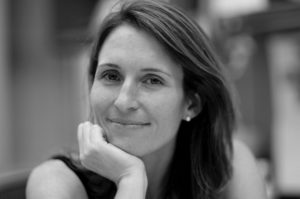 There are good scientific mentors. There are good professional life mentors. But good scientific mentors are not necessarily good career mentors. Those who are great at both deserve recognition. Dr. Erin Adams is quite the perfect example of someone who can offer great scientific advice and personal guidance. She is definitely someone I wish I had met earlier in my career. Dr. Adams is a fantastic mentor beyond the bench, the Joseph Regenstein Professor of Biochemistry and Molecular Biology, serves on the Committees on Immunology and, Cancer Biology at the University of Chicago. She is also a Principal Investigator of the myCHOICE program.
There are good scientific mentors. There are good professional life mentors. But good scientific mentors are not necessarily good career mentors. Those who are great at both deserve recognition. Dr. Erin Adams is quite the perfect example of someone who can offer great scientific advice and personal guidance. She is definitely someone I wish I had met earlier in my career. Dr. Adams is a fantastic mentor beyond the bench, the Joseph Regenstein Professor of Biochemistry and Molecular Biology, serves on the Committees on Immunology and, Cancer Biology at the University of Chicago. She is also a Principal Investigator of the myCHOICE program.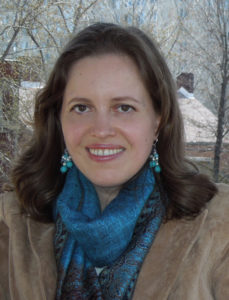 The first time I met Yulia was in 2015 when I visited Dr. Brian Popko’s laboratory to finalize my rotation. She smiled at me and said: “Whenever you have a question, you can come to me.” I thought her words were probably just a hint of her being a nice and polite senior postdoc in Dr. Popko’s laboratory. However, it turned out she really meant it. Since 2015, Yulia has become my role model, my best lab mate, and best friend. She is one of the few people I met who refresh my mind to look and experience the world differently.
The first time I met Yulia was in 2015 when I visited Dr. Brian Popko’s laboratory to finalize my rotation. She smiled at me and said: “Whenever you have a question, you can come to me.” I thought her words were probably just a hint of her being a nice and polite senior postdoc in Dr. Popko’s laboratory. However, it turned out she really meant it. Since 2015, Yulia has become my role model, my best lab mate, and best friend. She is one of the few people I met who refresh my mind to look and experience the world differently.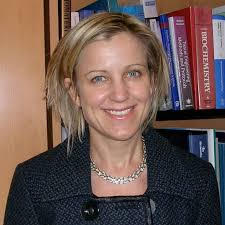 I confess that writing about Melody Swartz is a somewhat intimidating task. The world sees her as an Arnold and Mabel Beckman Young Investigator Award recipient, a winner of the National Science Foundation Early Career Award, and one of the Brilliant 10 named by Popular Science in 2006. There have already been numerous articles written about her; I was concerned that I would be rehashing another one of these articles that herald her many accomplishments. Nevertheless, I have the desire to do her achievements and even more so, the personal side of her story justice.
I confess that writing about Melody Swartz is a somewhat intimidating task. The world sees her as an Arnold and Mabel Beckman Young Investigator Award recipient, a winner of the National Science Foundation Early Career Award, and one of the Brilliant 10 named by Popular Science in 2006. There have already been numerous articles written about her; I was concerned that I would be rehashing another one of these articles that herald her many accomplishments. Nevertheless, I have the desire to do her achievements and even more so, the personal side of her story justice.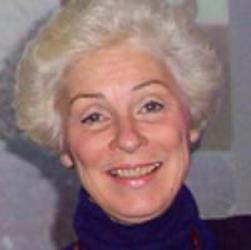 Dr. Nancy Schwartz often sits quietly, listening to scientists of all levels as though she is no different from the others in the room. Humility, a characteristic often attributed to womanhood, is partially why she is so successful. She listens, processes information, thinks about what to say so no word is left unweighted. She does not need to command respect with a loud voice and broad shoulders, she does it naturally and with a dash of class.
Dr. Nancy Schwartz often sits quietly, listening to scientists of all levels as though she is no different from the others in the room. Humility, a characteristic often attributed to womanhood, is partially why she is so successful. She listens, processes information, thinks about what to say so no word is left unweighted. She does not need to command respect with a loud voice and broad shoulders, she does it naturally and with a dash of class.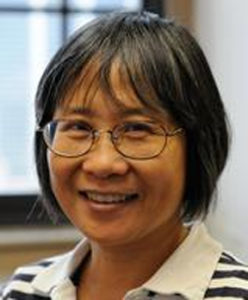 Dr. Sui Huang’s role model is Barbara McClintock, the Nobel Laureate who discovered transposable elements. In many ways, the two scientists are alike. Sui, like McClintock, has a fierce love and curiosity for science. She will often run into my lab with a grin on her face exclaiming about the latest piece of data that excites her. Sui is also an innovative scientist. Her ideas spark the imagination and push the limits of how we look at biology. Like McClintock, she is also persistent. Through the climate of tight funding, Sui continues to stay true to her honest pursuit of knowledge. As Sui serves in her current position as Associate Professor in the Cell and Molecular Biology Department at the Northwestern University Feinberg School of Medicine, she continues her joyful search for nuclear structures and functions in cancer cells and beyond.
Dr. Sui Huang’s role model is Barbara McClintock, the Nobel Laureate who discovered transposable elements. In many ways, the two scientists are alike. Sui, like McClintock, has a fierce love and curiosity for science. She will often run into my lab with a grin on her face exclaiming about the latest piece of data that excites her. Sui is also an innovative scientist. Her ideas spark the imagination and push the limits of how we look at biology. Like McClintock, she is also persistent. Through the climate of tight funding, Sui continues to stay true to her honest pursuit of knowledge. As Sui serves in her current position as Associate Professor in the Cell and Molecular Biology Department at the Northwestern University Feinberg School of Medicine, she continues her joyful search for nuclear structures and functions in cancer cells and beyond.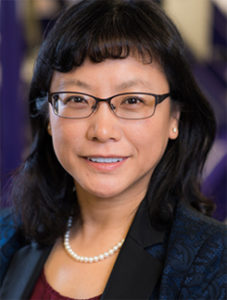 If you’re reading this article, whether on a screen or in print, you are using a product of manufacturing. Manufacturing converts raw materials into consumer goods—and due to mass production, more consumer goods are manufactured than ever before.
If you’re reading this article, whether on a screen or in print, you are using a product of manufacturing. Manufacturing converts raw materials into consumer goods—and due to mass production, more consumer goods are manufactured than ever before.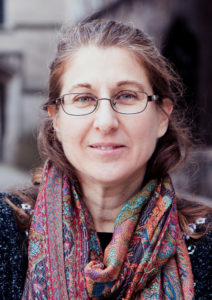 I still remember the first time I encountered Dr. Jocelyn Malamy, Associate Professor in the Department of Molecular Genetics and Cell Biology at the University of Chicago. She was giving the final set of lectures in one of the toughest classes I took my first year of graduate school. Immediately, I was struck by her enthusiasm and vigor, not only for plant biology, but also for the task at hand—teaching. Jocelyn is a past recipient of the Llewellyn John and Harriet Manchester Quantrell Award for Excellence in Undergraduate Teaching, which is no surprise for anyone who’s ever taken one of her classes. She feels that University of Chicago students are a “really gratifying group to work with, because you provide them good exciting things, and then they become excited.” This attitude was definitely reflected in her lectures for that course, which consistently engaged the audience in a way that many educators strive for their whole careers.
I still remember the first time I encountered Dr. Jocelyn Malamy, Associate Professor in the Department of Molecular Genetics and Cell Biology at the University of Chicago. She was giving the final set of lectures in one of the toughest classes I took my first year of graduate school. Immediately, I was struck by her enthusiasm and vigor, not only for plant biology, but also for the task at hand—teaching. Jocelyn is a past recipient of the Llewellyn John and Harriet Manchester Quantrell Award for Excellence in Undergraduate Teaching, which is no surprise for anyone who’s ever taken one of her classes. She feels that University of Chicago students are a “really gratifying group to work with, because you provide them good exciting things, and then they become excited.” This attitude was definitely reflected in her lectures for that course, which consistently engaged the audience in a way that many educators strive for their whole careers.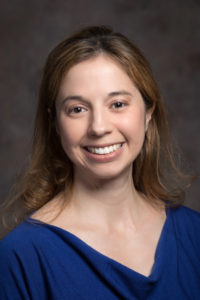 Dr. Laura Thorp, Physical Therapist turned Anatomist and now mom of four boys under the age of 5, is highly regarded as an educator by her students. In fact, she has been awarded on several occasions for Excellence in Teaching and having been one of her students, I can personally endorse her merit for these awards. I first met Dr. Thorp at Rush University Medical Center when she was an Assistant Professor of Anatomy and Cell Biology. As an aspiring professor of anatomy myself, I have always viewed Dr. Thorp as an important mentor and role model.
Dr. Laura Thorp, Physical Therapist turned Anatomist and now mom of four boys under the age of 5, is highly regarded as an educator by her students. In fact, she has been awarded on several occasions for Excellence in Teaching and having been one of her students, I can personally endorse her merit for these awards. I first met Dr. Thorp at Rush University Medical Center when she was an Assistant Professor of Anatomy and Cell Biology. As an aspiring professor of anatomy myself, I have always viewed Dr. Thorp as an important mentor and role model.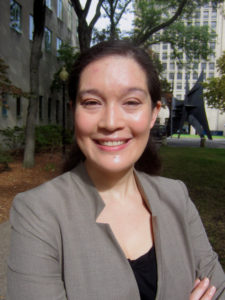 If you pause and consider your surroundings, you will find that a type of molecule, called a polymer, surrounds you. Polymers are large molecules that are made up of smaller molecules, called monomers. Monomers link together to form a polymer much in the same way that a necklace is made up of beads (discrete, repeating units).
If you pause and consider your surroundings, you will find that a type of molecule, called a polymer, surrounds you. Polymers are large molecules that are made up of smaller molecules, called monomers. Monomers link together to form a polymer much in the same way that a necklace is made up of beads (discrete, repeating units).